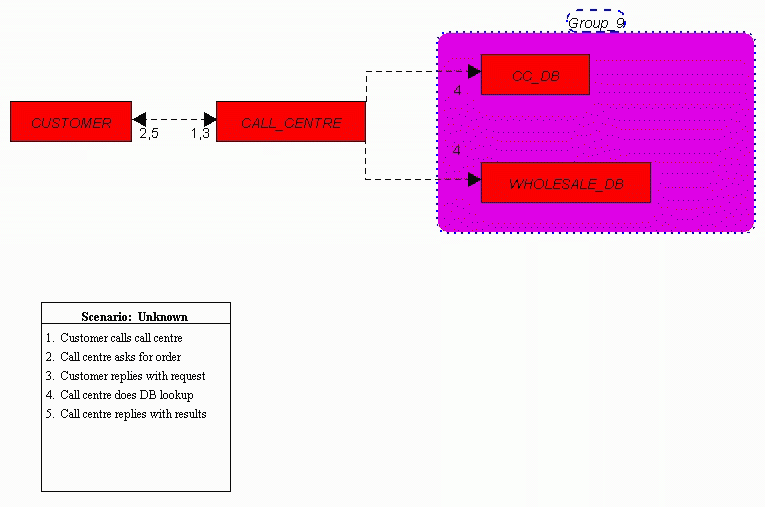|
|
|
Sponsored Link •
|
Summary
Business Object Notation, the analysis and design method from the Eiffel community, has its own graphic language. The BON Dynamic Diagrams can be easily represented in a UML diagram or with any simple Visio-like tool and provide a succinct way to document system interactions that appeals to both visual and verbal thinkers.
|
Advertisement
|
BON is another interesting OO design method that has fallen by the wayside (roadkill by the nearest UML 18-Wheeler).
The ideas on how to compress diagrams and their effect on packaging make the [BONBook] still worth studying.
Something I have found of enduring use was their Dynamic Diagrams which combine the two-dimensional representation of communicating objects found in UML Collaboration Diagrams and a simple textual narrative of the scenario using those objects. This narrative can be easily entered in a UML diagram with a note alongside the diagram.

Figure 3 in [Paige2002].
The sparse graphical rendition of the dynamic diagrams cuts down on visual noise so the diagram is easy to skim. The numbered narrative steps of the scenario can be read independently as a quick summary of what's happening on the diagram. The combination suits both visual and verbal thinkers.
Home page for the method is at http://www.bon-method.com/ which now includes Visio templates for BON and a PDF copy of the [BONBook].
In 2004 I co-authored a technical architecture which needed to describe how a bunch of collaborating service components were used in different scenarios [CoxDent2004].
After sketching a few dynamic diagrams for the project manager and my collaborator, they were quick to approve using this diagram style to represent the various scenarios and the collaborating components. Feedback from tenderers responding to the technical architecture was generally positive, indicating the diagrams achieved their main aim of being easy to comprehend by the person reading the architecture.
| [BONBook] | (1, 2) http://www.bon-method.com/book_print_a4.pdf |
| [CoxDent2004] | http://www.sidp.com.au/files/Store/SIDP-TechnicalArchitecture_Final.pdf |
| [Paige2002] | http://www.jot.fm/issues/issue_2002_08/article5 |
Have an opinion? Be the first to post a comment about this weblog entry.
If you'd like to be notified whenever Andy Dent adds a new entry to his weblog, subscribe to his RSS feed.
 | Andy is a free-lance developer in C++, REALbasic, Python, AJAX and other XML technologies. He works out of Perth, Western Australia for a local and international clients on cross-platform projects with a focus on usability for naive and infrequent users. Included in his range of interests are generative solutions, software usability and small-team software processes. He still bleeds six colors, even though Apple stopped, and uses migration projects from legacy Mac OS to justify the hardware collection. |
|
Sponsored Links
|